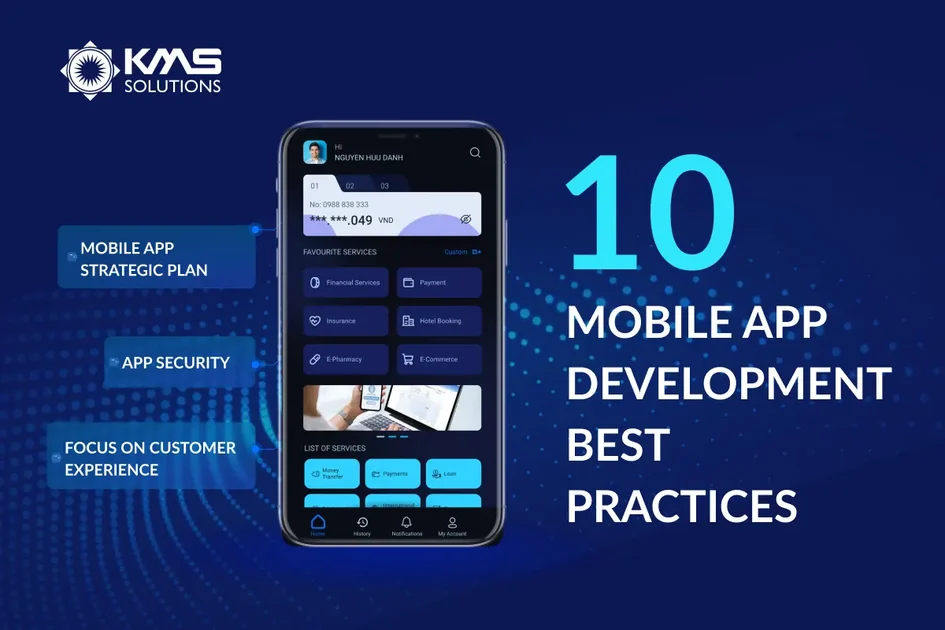Mobile applications are a crucial part of our daily lives. We use them to connect with our family and friends, stay informed, for entertainment, and many more. With over 2.7 million applications in the Google Play store and 2.2 million in the App Store, competition for consumers’ attention is fierce. This means there are tons of abandoned apps out there not being used by anyone.
Thus, to stand out from the crowd, extensive market research and great expertise in mobile app development are necessary, To attract and retain users, your digital app must be of high quality and meet the specific demands of the market.
Key Factors of Successful Mobile Apps
The secret to a successful app is a deft balancing act between three aspects: the market, the consumer, and the product itself. Indeed, all of these elements must work together to provide users with a unique value, superior experience, and great performance. Besides, one final essential component of a well-designed mobile app is its accessibility.
So, what characteristics of a mobile app are worth considering?
The characteristics of such an app can be divided into two categories: consumer-centric and business-centric. A successful will need to benefit both users and corporations while assuring faultless function.
Customer-centric aspects:
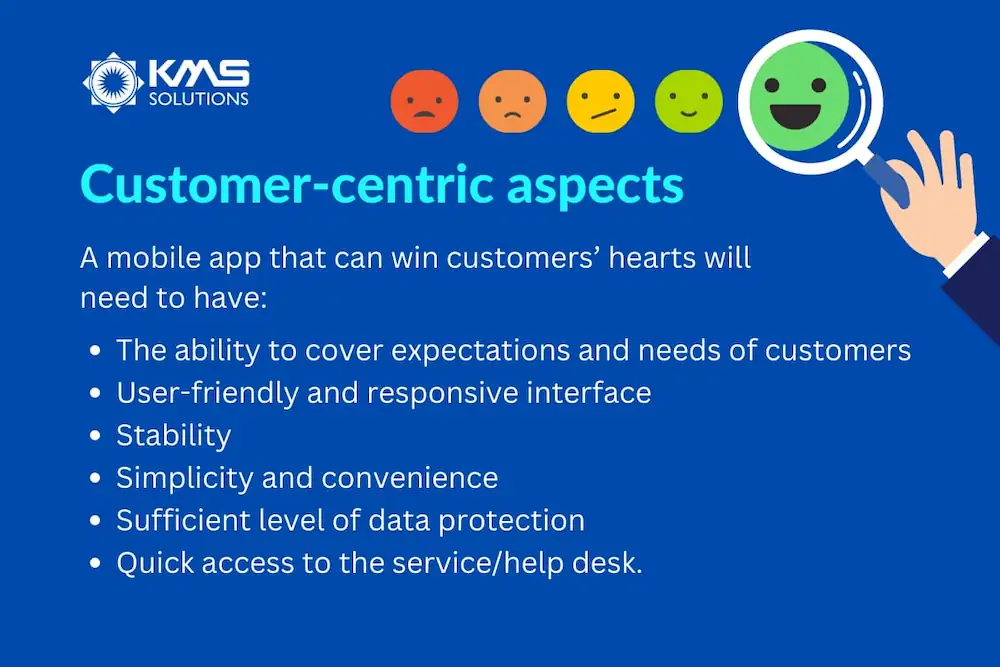
Business-centric aspects:
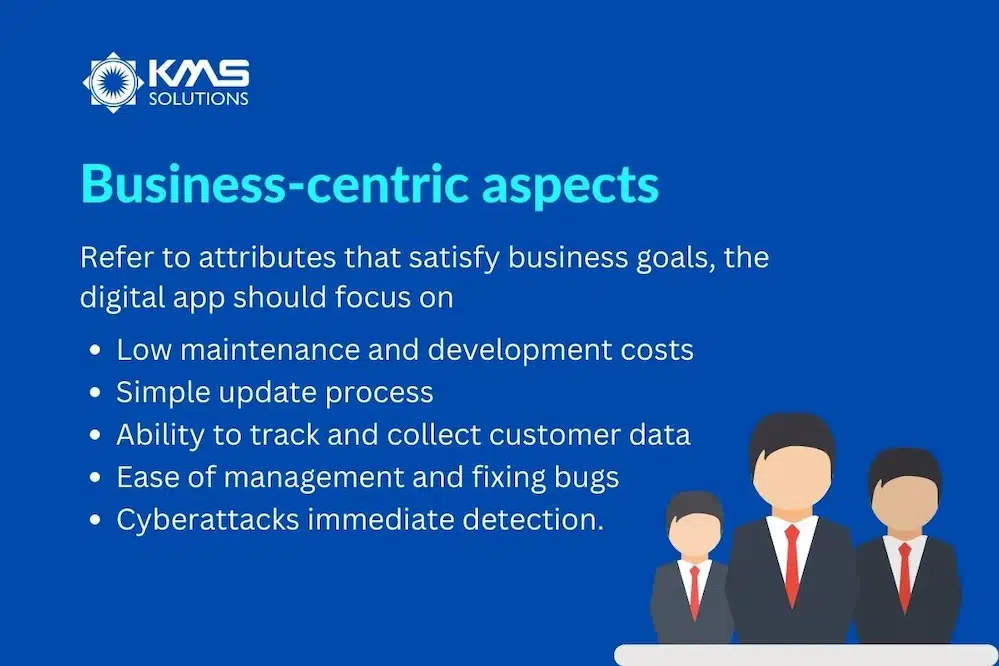
Best Practices for Mobile App Development
Developing a mobile app can be daunting, particularly if you’ve never tried it before. Even if you have experience in this area, there are other factors to consider. This list of best practices for mobile app development will help you overcome the early obstacles of your idea to build a successful app covering all the aspects defined above.
#1. Research Market: Trends, Targeted Audience, and Competitors
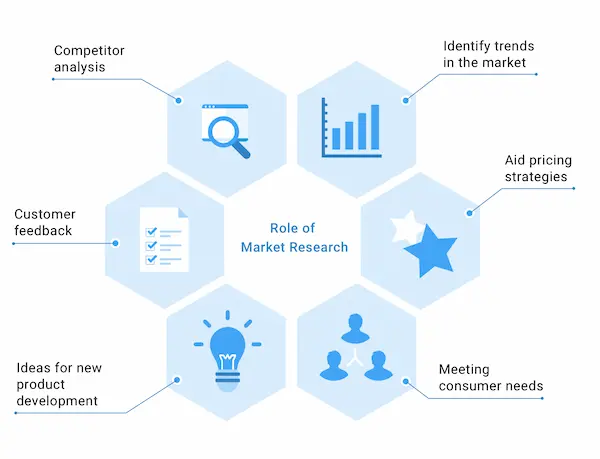 Source: Crunchbase
Source: Crunchbase
Extensive research is one of the best practices for mobile application testing that you should not let slip through the cracks. It will help you identify the potential of the targeted market, who will use your app, and the barriers to your entry.
- Understand the market trends: Knowing what’s trending in the mobile app market is crucial for every developer to keep the product up-to-date. One app that solves one user’s requirement is no longer a trend. Instead, customers are becoming more interested in an all-in-one solution that allows them to solve multiple issues. Therefore, a Super app is a new mobile development trend that you can consider.
- Identify your audience and discover their needs: Determining users in detail can help you understand the market needs, identify possible customer acquisition channels, and know how to communicate with them. You can collect mass audience data (including demographics, users’ behaviors, and motivations) or narrow down the target users (ideal for targeting an innovation toward a niche) by searching for statistics or conducting surveys.
- Analyze competitors: The competitors you choose to compare with should have similar objectives in the industry. Consider start-ups and even leading companies, analyze their strengths and weaknesses, then absorb them in planning for your app development.
Tips: You can find competitors’ apps that fit your niche or target the same audience as your app, or show up in the app store search results for relevant keywords.
#2. Develop Mobile App Strategic Plan
A mobile app strategy will help you ensure the product accomplishes its intended purpose and save time and money on unnecessary development, functionality, and updates. A robust strategy should consider the overall business strategy and mobile app idea, as well as the plan for development, design, deployment, marketing, and management.
At this phase, you can plan, prioritize tasks, and build upon the mobile app roadmap to ensure the product’s time-to-market. The plan and processes should be broken down into small and manageable chunks.
#3. Concentrate on Customer Experience
The research from Google indicates that poor mobile experiences will reduce the likelihood of continuing to use the app by 62%, regardless of how attractive or data-driven your marketing efforts are. Hence, to increase user retention and reduce the probability of app abandonment or uninstallation, all phases of your app development process should seek to maximize their satisfaction.
Since a vast number of people will use your mobile app over time, it’s essential to focus on digital customer experience. Some aspects that can contribute to a positive experience are ease of use, convenience, and speed. However, as the costs of improving customer experience may exceed the plan sometimes, you also need to ensure that time, resources, and efforts are well spent.
As the user interface may directly affect the experience of users, businesses should also consider some app design best practices.
#4. Treat Security with the Utmost Primacy
When the mobile app is released, there will be a pool of user information and sensitive data flow into your system. Although the kind of information may vary depending on the functionality of your app, it’s your responsibility to protect each and every piece of user data.
Some practices to keep your data security as tight as an oyster:
- Developing secure code or acquiring secure external source code
- Encrypting properly sensitive personal data, such as encrypting the cache, local database, or API communication
- Using tokens to verify identities, with unique tokens for each device and variable session lengths
- Having a plan for data backup or disaster discovery
- Consulting with a trusted data analytics service provider such as KMS Solutions to keep up with the latest data security technology.
#5. Create a Simple yet Intuitive UI/UX Design
One of the keys to an app’s success is its design. This applies to both B2C and B2B mobile apps. Nowadays, people tend to choose mobile apps with a basic yet intuitive UI/UX. A simple UI, for instance, will help your audience use the app faster and more efficiently, while instinctive UX allows them to understand and use the app immediately.
There are many advantages of well-designed UI/UX. A user-friendly registration process may result in increased user acquisition and download numbers, while a simple onboarding process will make users stick with your app. Check out other best practices for mobile apps UI/UX design here!
#6. Implement Automation Testing
Automation testing is an effective way to run tests as it saves much time on the same cases and reduces the instances of human errors. Especially under the Agile methodology, improving the digital app’s time-to-market is emphasized. Thus, to accelerate the testing process while ensuring flawless functioning, your development team should consider test automation.
Besides, with a vast selection of automation testing tools available on the market, it stands to reason that not all of them will be ideal for your particular requirements. Some criteria for evaluating automation testing tools include:
- Project’s budget
- The QA team’s experience and knowledge
- Ability to meet your testing requirements: Will the tool support the mobile platform? Does it enable testers to create test scripts in their preferred languages?
When other tools support web testing, Kobiton is the scriptless test automation tool specifically designed for mobile devices. The tool offers comprehensive features to help you run almost mobile app test cases.
#7. Ensure your Team is on The Same Page
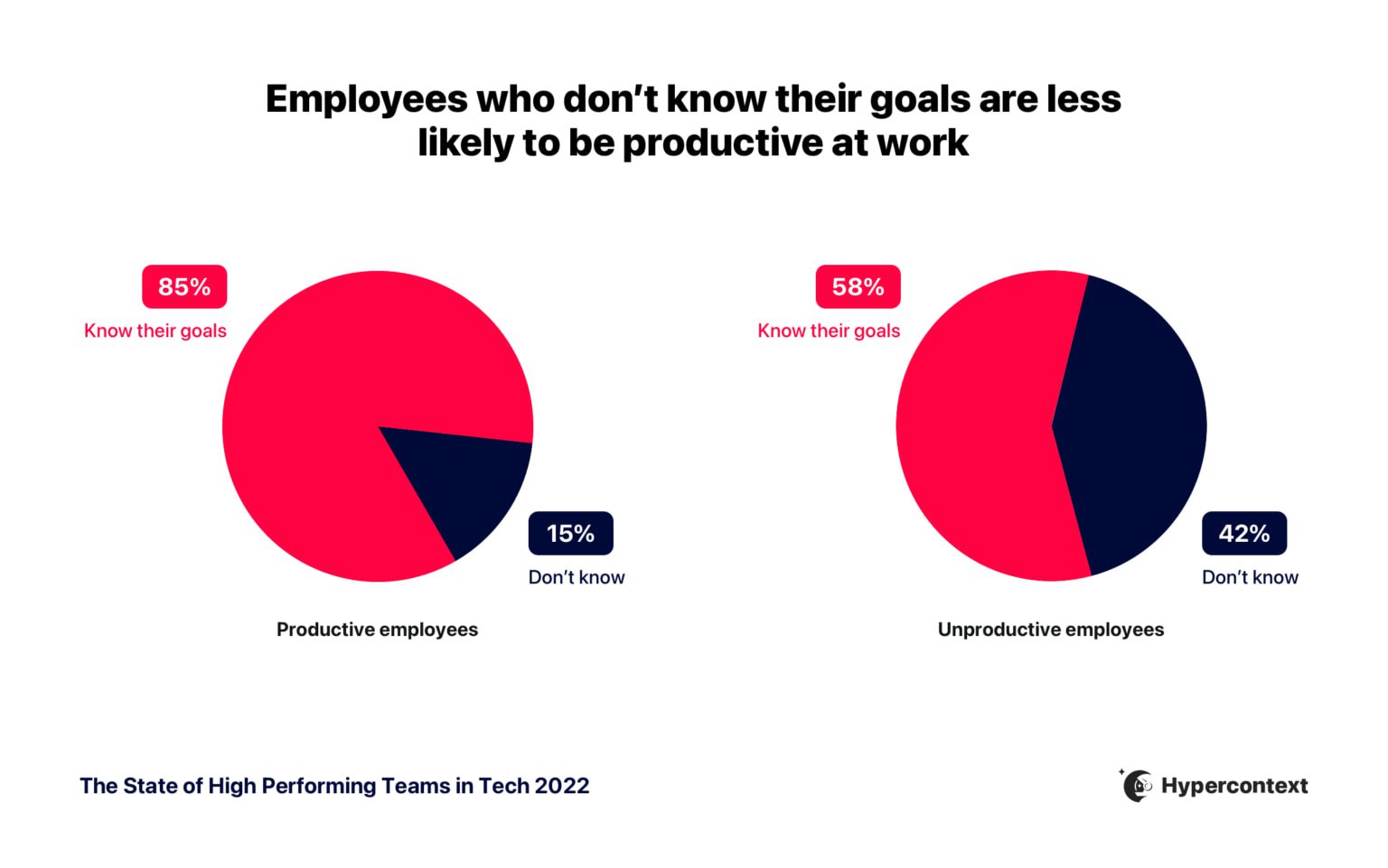
Source: Hypercontext
According to The State of High-performing Teams report, unproductive employees are 2.8 times more likely to be unaware of their goals and expectations. So, prior to assigning tasks to the development team, it’s necessary to ensure every member of your mobile app development team clearly understands the products and knows what they are working towards.
Frequent meetings and open communication encouragement can help you remind them of their goals and responsibilities and motivate them to have new ideas. Moreover, for effective communication, video conferencing and messaging platforms such as Google Meet, Zoom, Slack, etc. are worth paying attention to.
Read more: How to Build a Dedicated Development Team for Mobile App
#8. Integrate with Third-party
Third-party services can enrich your digital app, boost user retention, and enhance the overall user experience.
Take Google Maps as an instance; in addition to finding the quickest route from place A to B, third-party integrations with services like Uber make it possible to estimate the price for a ride to your desired destination or even hall an Uber straight from Google Maps. Moreover, this is also a great way to increase your app’s credibility. Integrating your app with third-party services that people already use will help you provide a familiar experience.
However, avoid overengineering third-party integrations. Implementing them is usually time and resources consuming, so only pick the services that are necessary. Conduct thorough research to ensure that the majority of users will find value in the third-party integration.
#9. Be Mindful of App Store Guidelines and Plan for Marketing Strategy
App stores are the ecosystem where multitudes of developers can publish their apps on it, and users can find the desired ones. Given the vast number of mobile apps that are released over time, app stores need to adopt stringent rules and guidelines that the developers can follow. Some app stores will examine an app’s safety features or overall performance; therefore, acquainting yourself with these guidelines will help you prevent app store rejection.
Moreover, when publishing products on the marketplaces, it’s crucial to notice that you’ll have to compete with a plethora of apps similar to yours available there. So, besides development strategy, you also need to concentrate on marketing strategy.
Tips: Dividing your marketing plan into three campaign phases: pre-launch, launch, and post-launch to get people excited about your product release and keep warm after that.
#10. Update Mobile App based on User Feedback
Often collecting customer feedback and having them as metrics for the next mobile app updates will help you improve user experience. Some possible ways to gain insights into how users interact with your mobile app:
- Check the review section in app stores: Users often go to the marketplace to leave comments and rate the app. You can also find some mobile app issues that users may face in their reviews.
- Ask for feedback: by sending emails, in-app messages, or even calling, you can ask for their thoughts about the product.
- Implement mobile apps analytics platforms: Mixpanel is a tool that can help you analyze customer journey in the app and prioritize what matters, make decisions quickly, and prepare for the next updates better through data
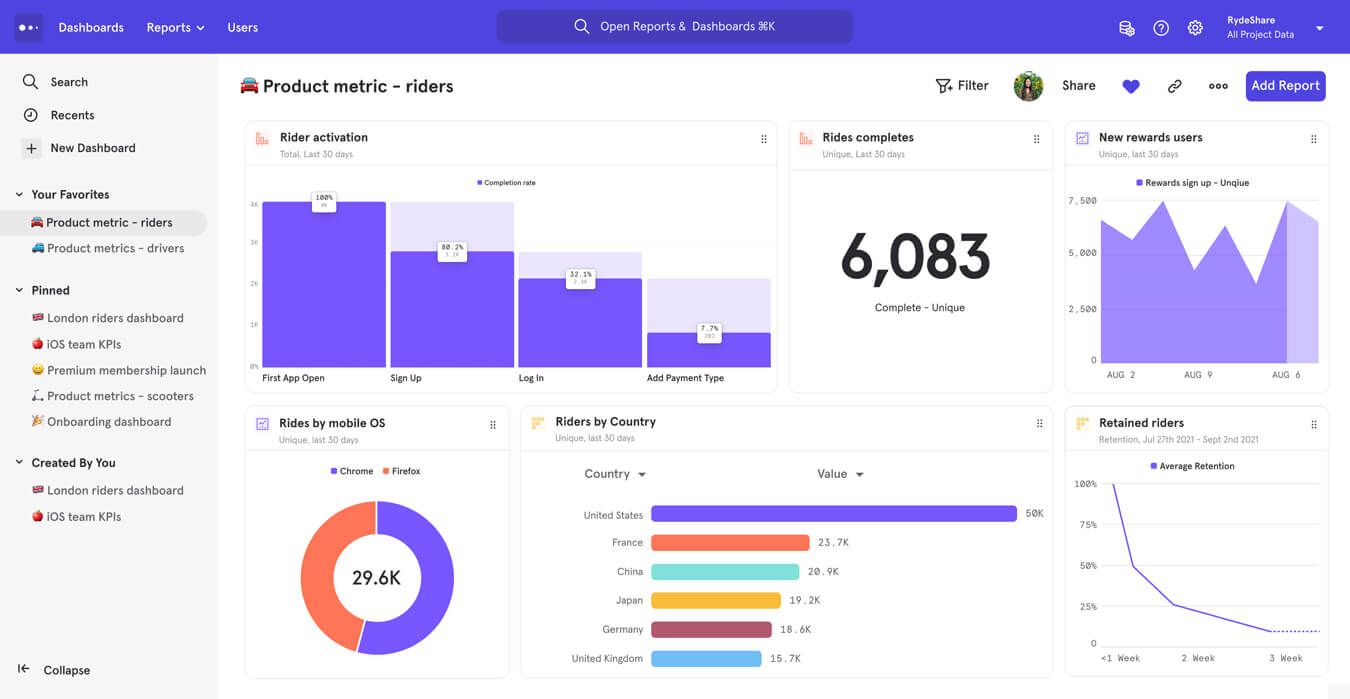
Source: Mixpanel
When it comes to mobile app development, some developers may find themselves grabbing at straws. Being on the bleeding edge of technology may be difficult, but applying these mobile app development best practices will assist you along the way.




